

Philae
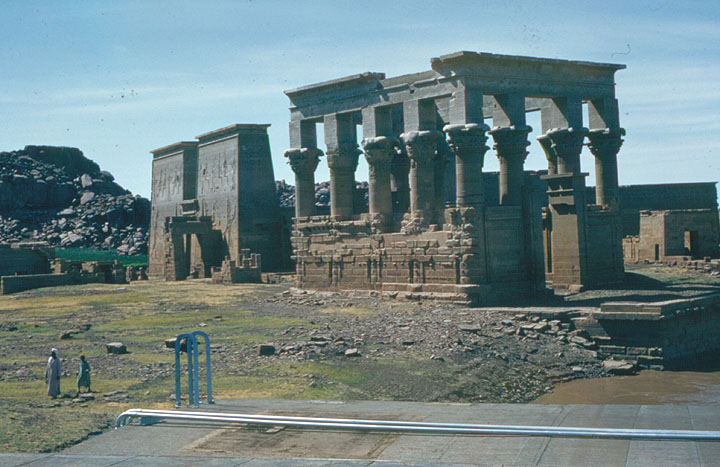
the island of Philae, as it
appeared in 1957
when my river boat from Sudan was tied up there waiting for Egyptian Customs to
open
On a small island south of the city of Aswan lies the beautiful temple complex
of Philae. Philae in Greek or Pilak in ancient Egyptian, meaning ‘the end,’
defined the southern most limit of Egypt. It was begun by Ptolemy II and
completed by the Roman Emperors. Philae was the last bastion of ancient Egyptian
religion and hieroglyphic usage.
The temple at Philae was nearly lost under water when the high Aswan dam was
built in the 1960s. Fortunately the temple was rescued by a joint operation
between the Egyptian government and UNESCO.
Pavilion of Nectanebo I,
dedicated to Hathor
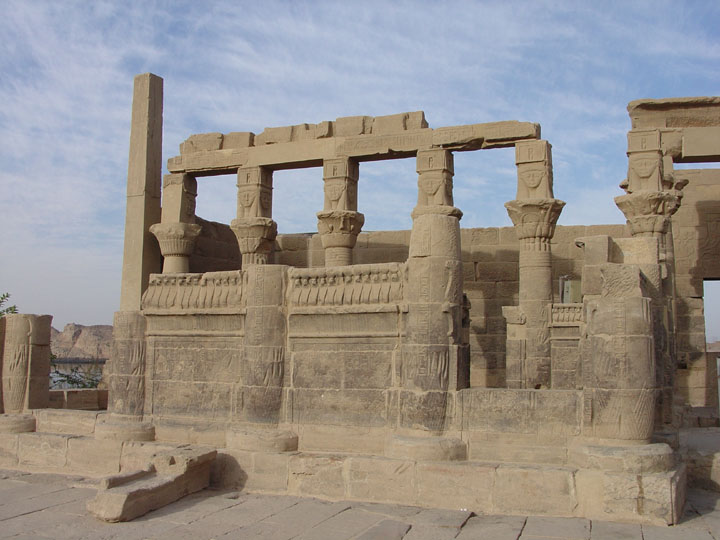
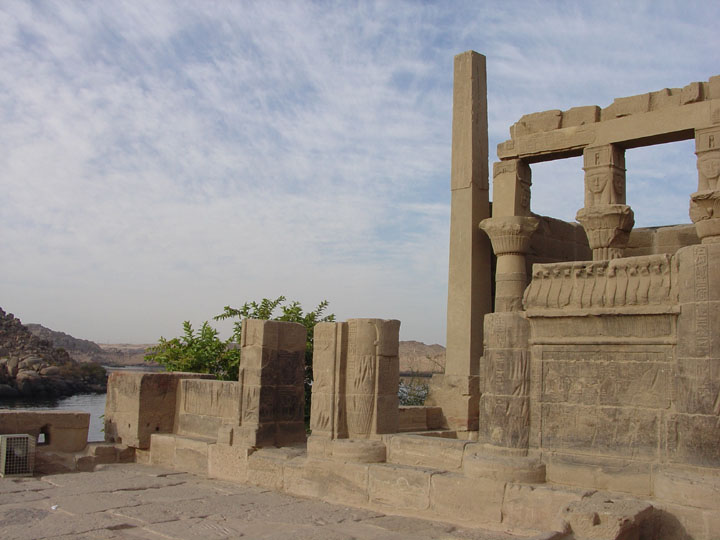
Isis Temple
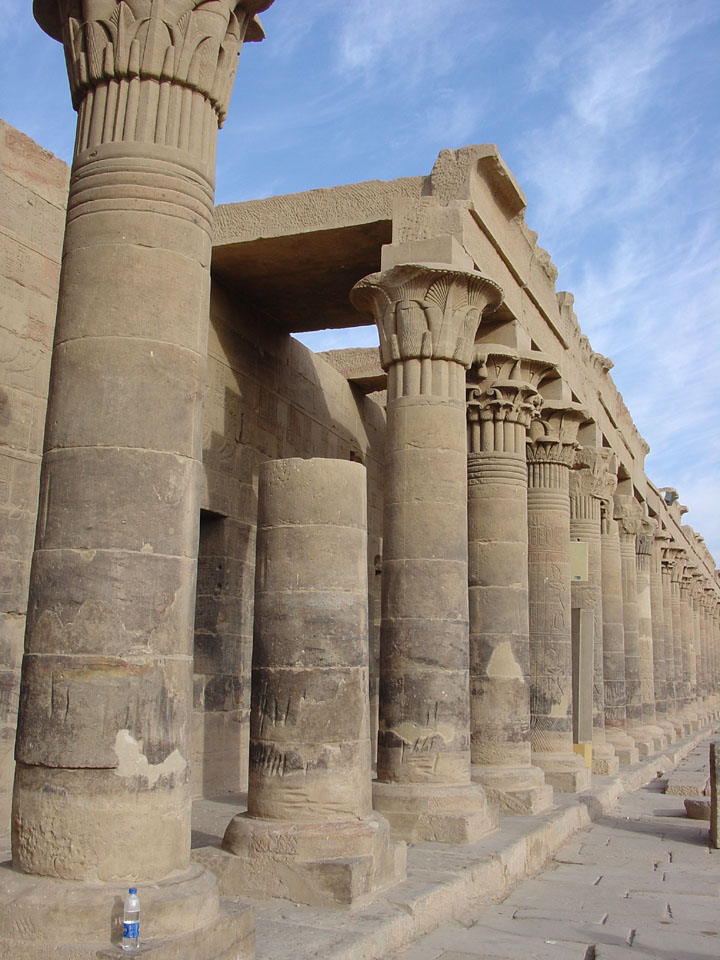
the outer court
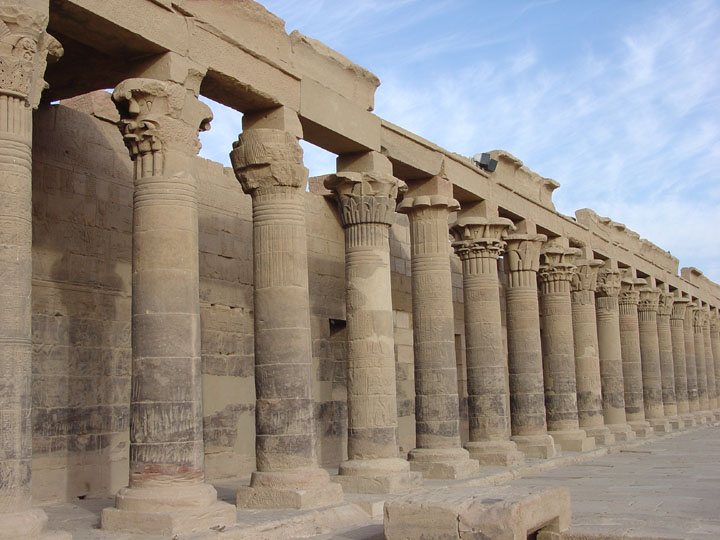
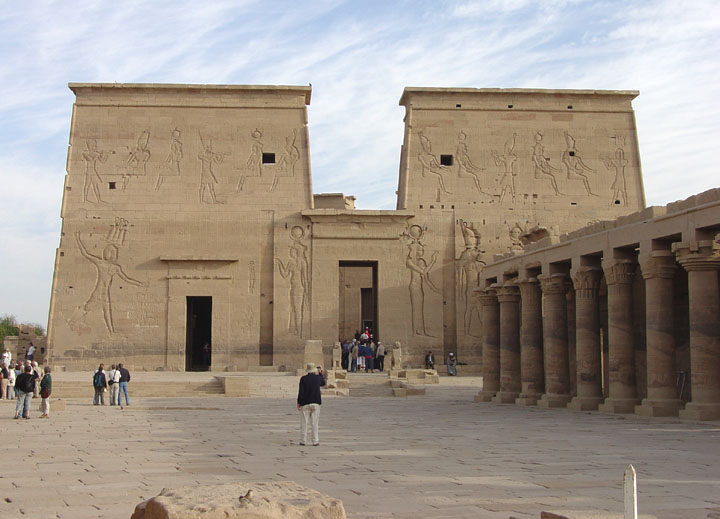
The temple is really a complex of temples, the main temple being dedicated to
the Goddess Isis, built by Pharaoh Ptolemy Xl.
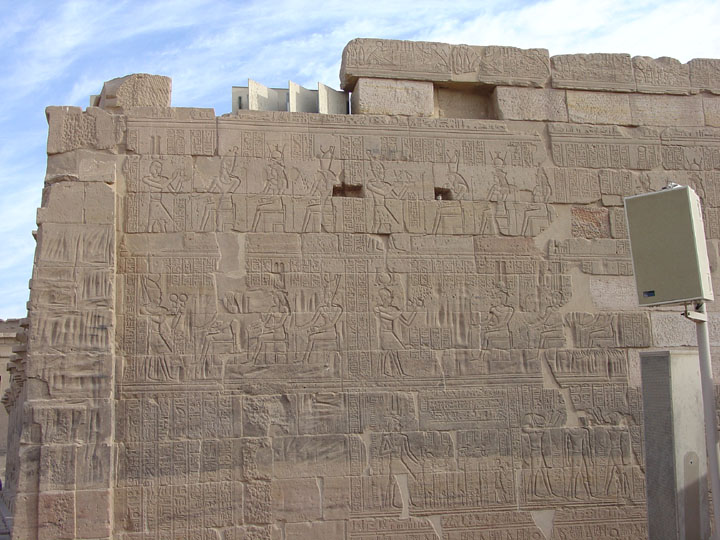
figures of the Gods
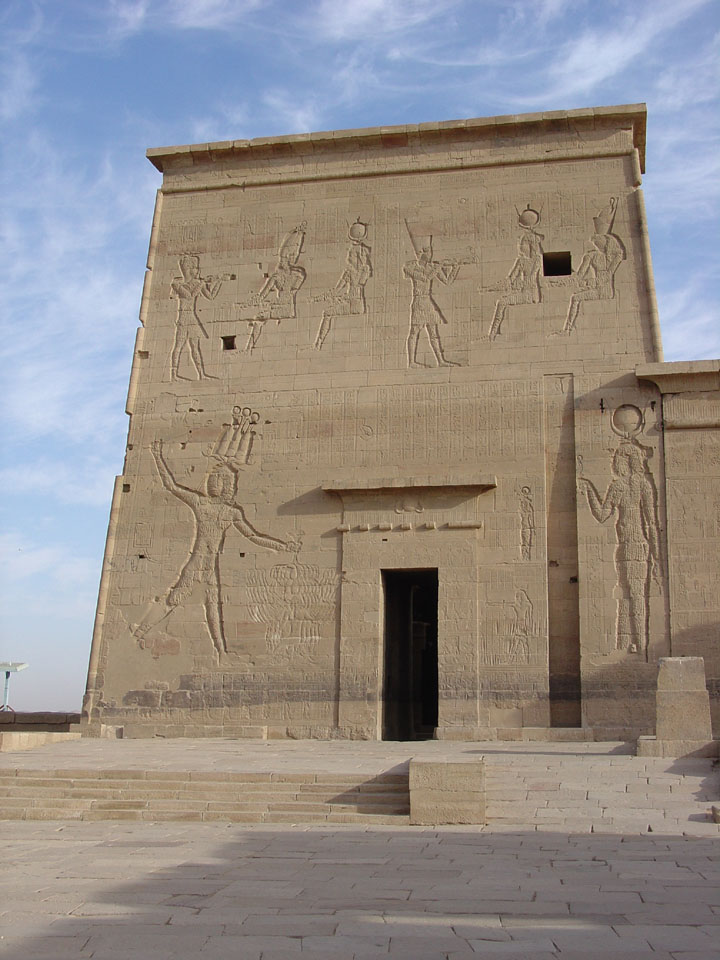

mammisi
(birth house)
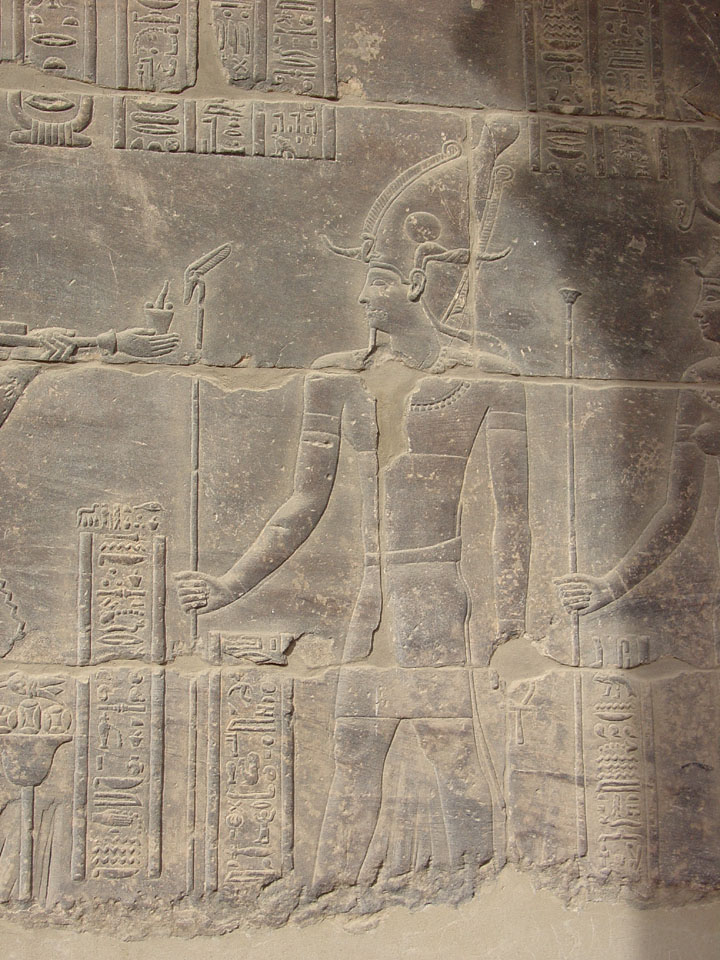

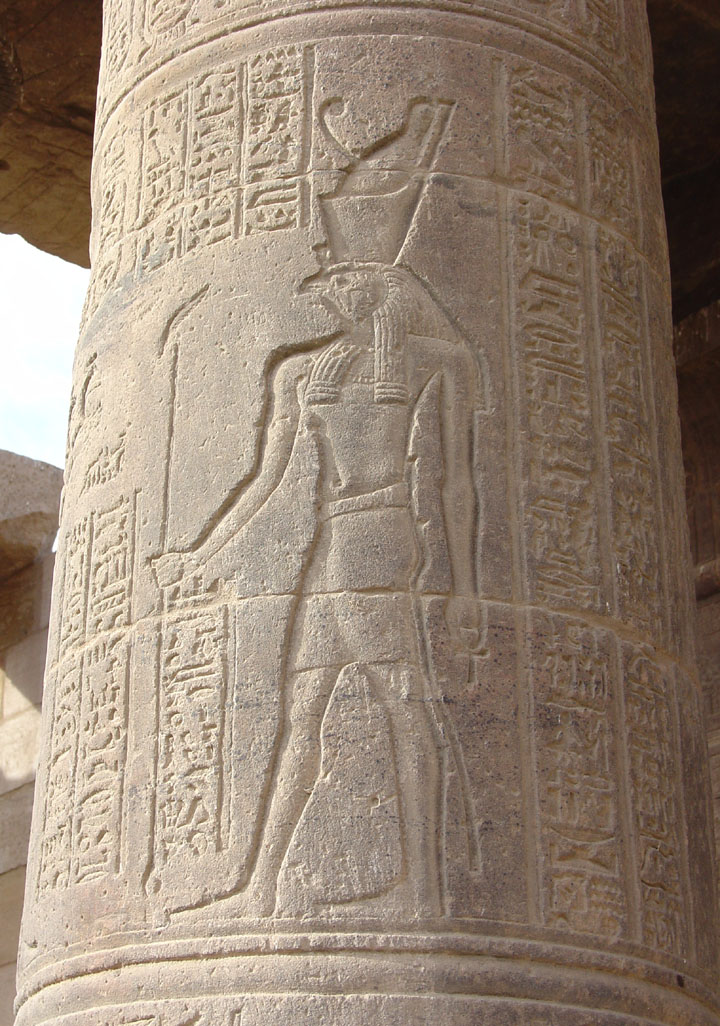
Horus
Also to be seen here is the Pavilion of Nectanebo I, dedicated to Hathor, and Trajan’s Pavilion, rebuilt by the emperor Trajan and with reliefs showing him offering gifts to the Egyptian Gods. The complex contains all the elements of ancient Egyptian history, with Egyptian, Greek and Roman architecture blending together.
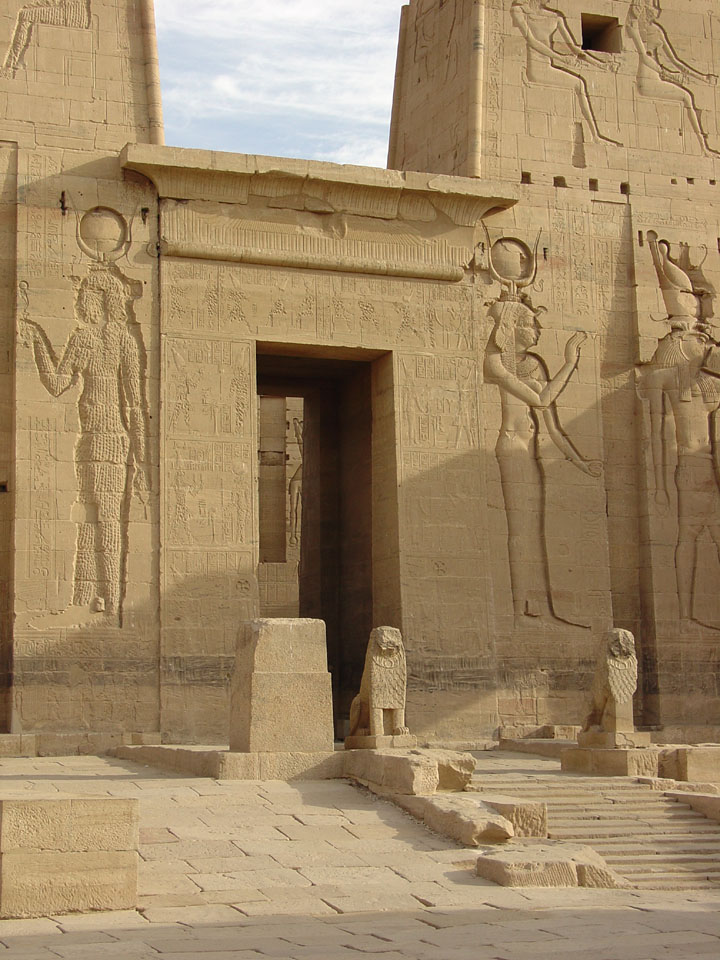
Isis
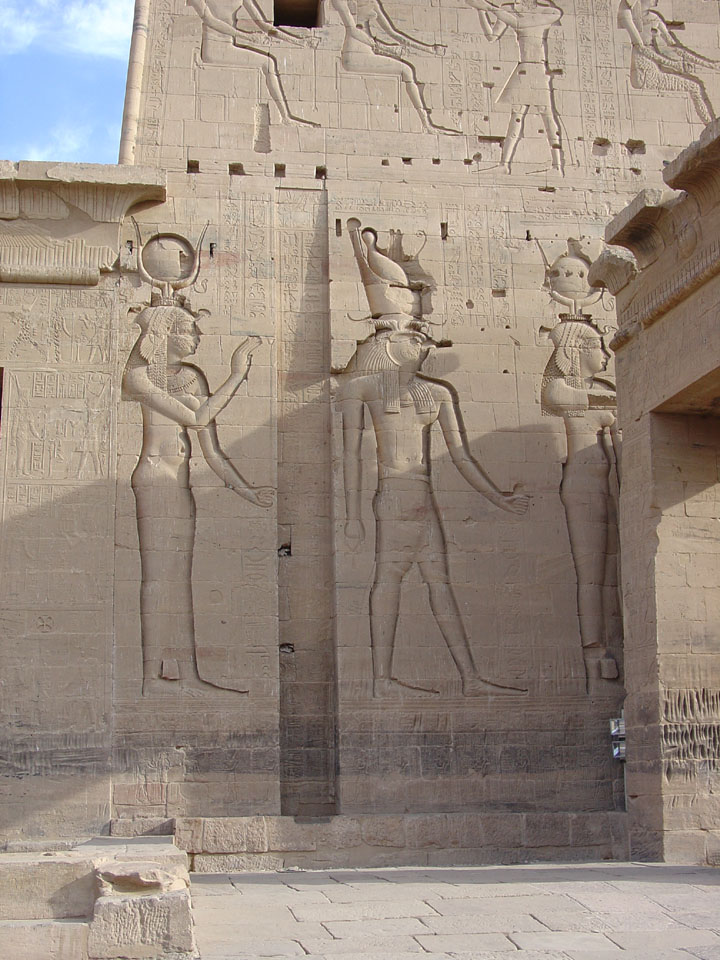
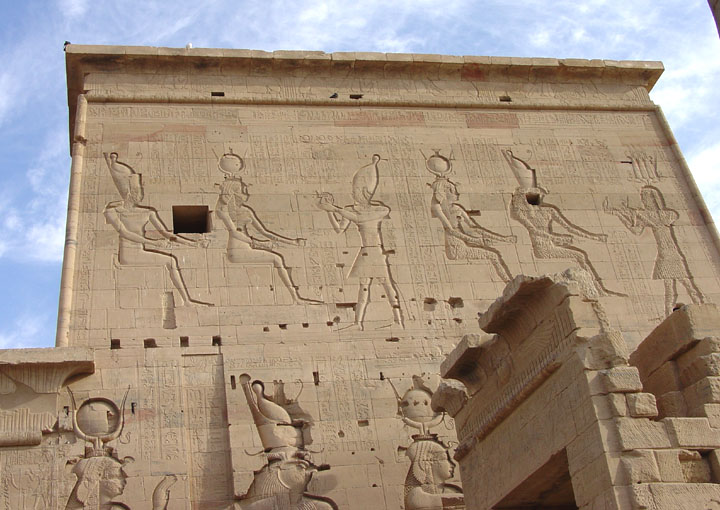
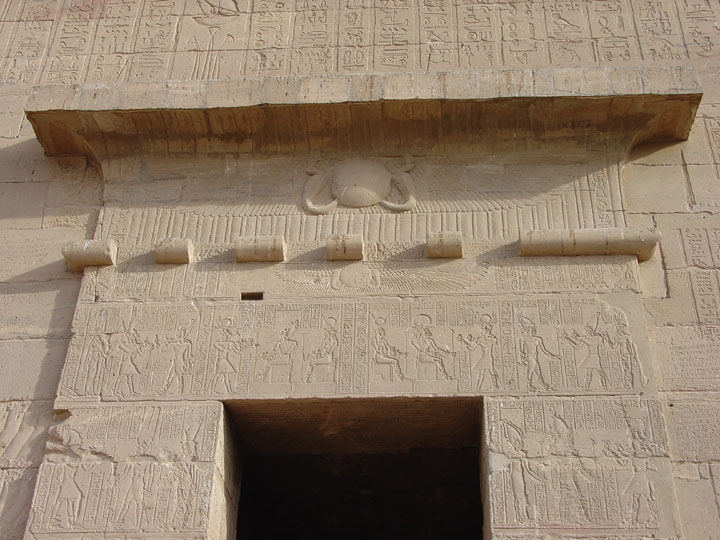
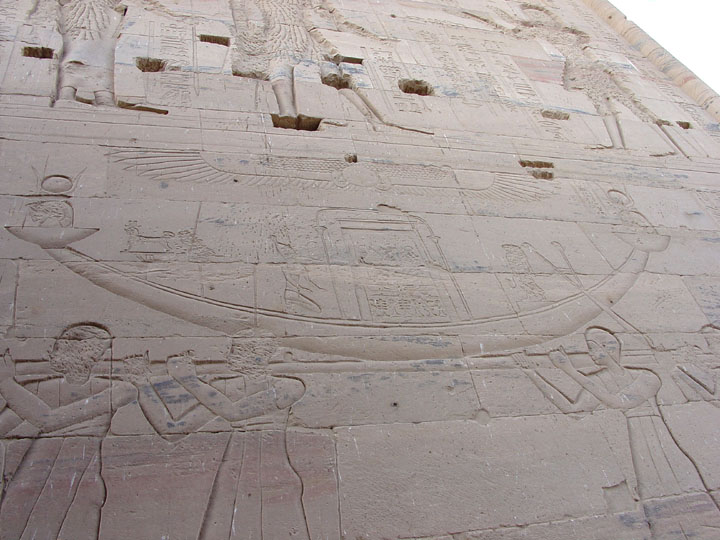
the solar barque
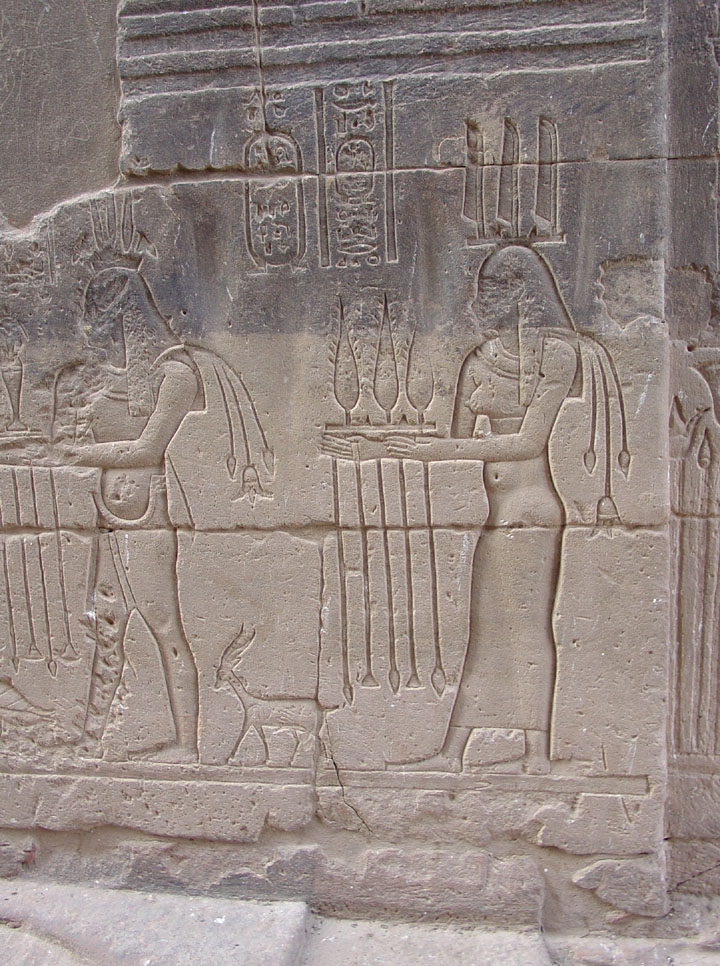
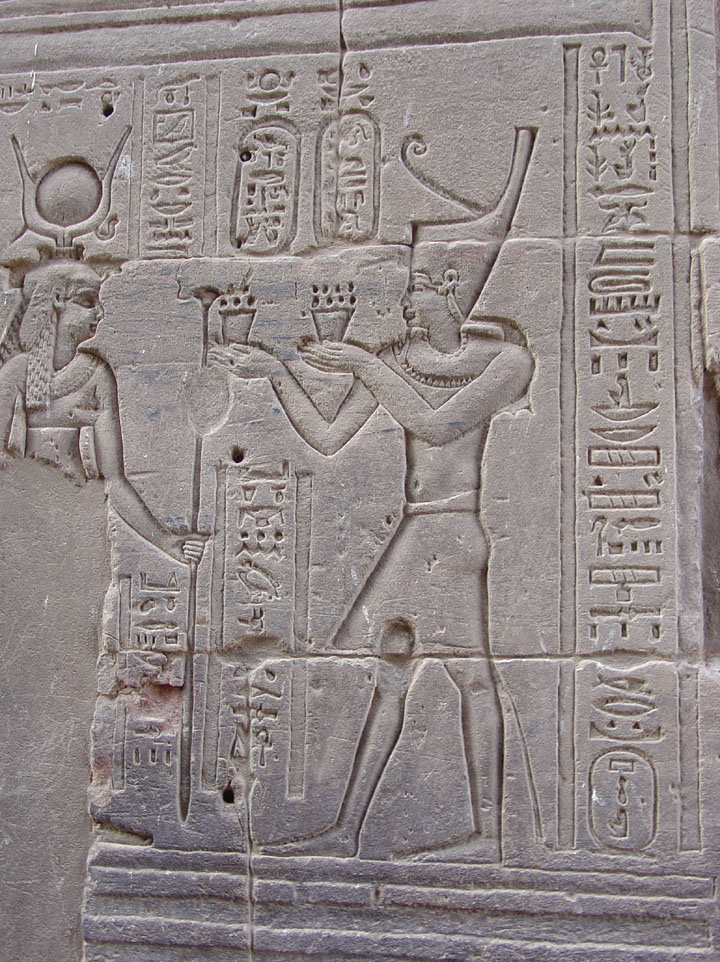
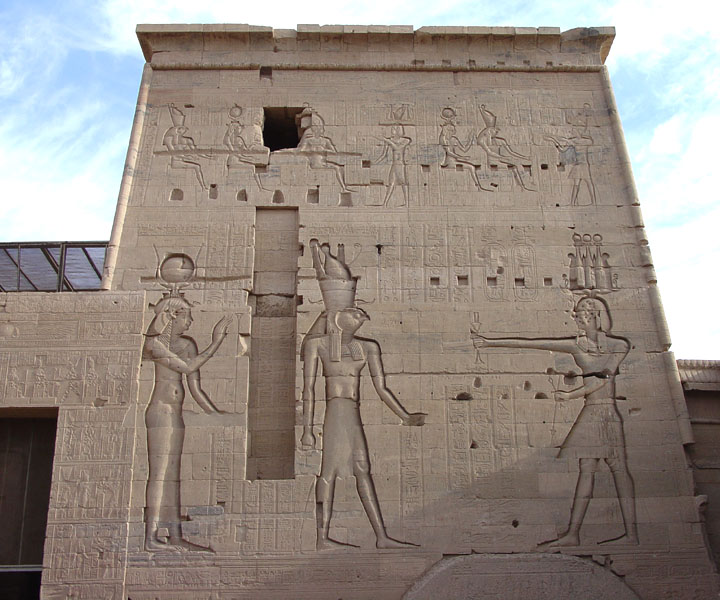
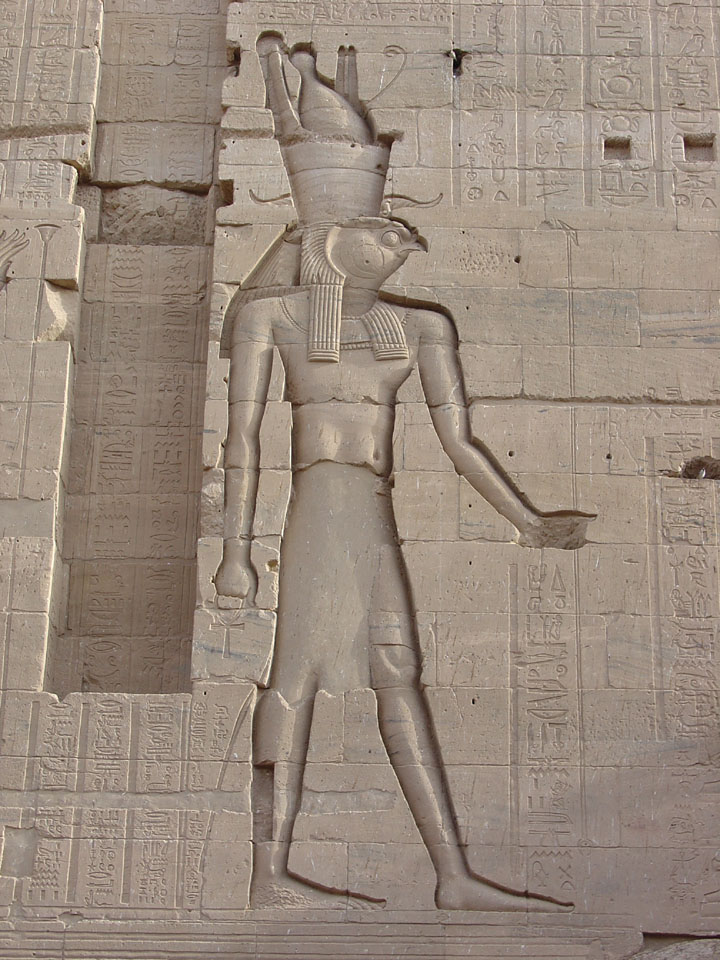
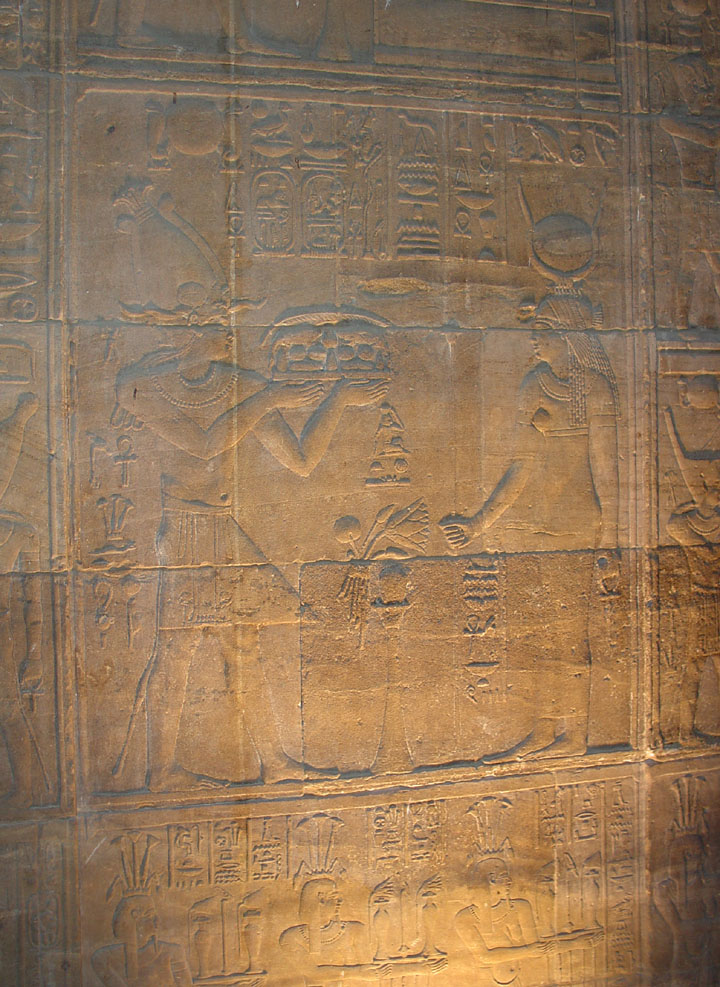
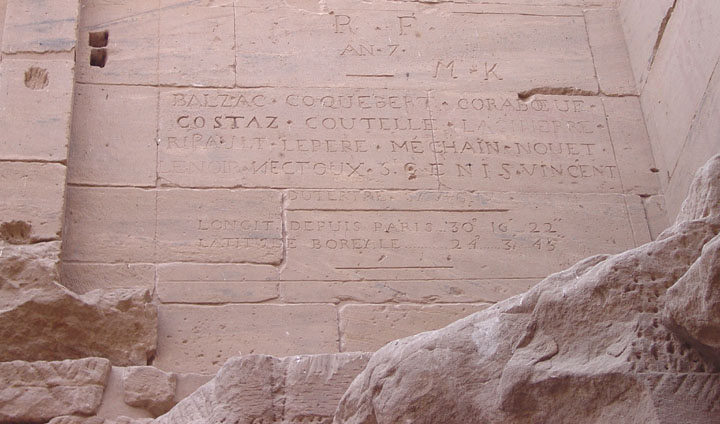
old grfphiti
The main temple of Isis is very impressive and well preserved, though the paint decoration has been removed by it’s time spent underwater. The main pylon (the walls surrounding an entrance) is covered with the usual reliefs of Ptolemy Xl sacrificing prisoners to the Gods, and generally being an all round heroic and wise Pharaoh. Inside, the main courtyard sports side colonnades with the columns in the later papyrus style before a second pylon leads to a Hypostyle hall with 10 ornate pillars. There are many additions to the temple, which give a fascinating insight into the way temples “grew” with time.

converted to Christian church
(notice the Coptic cross)
Temple of Trajan
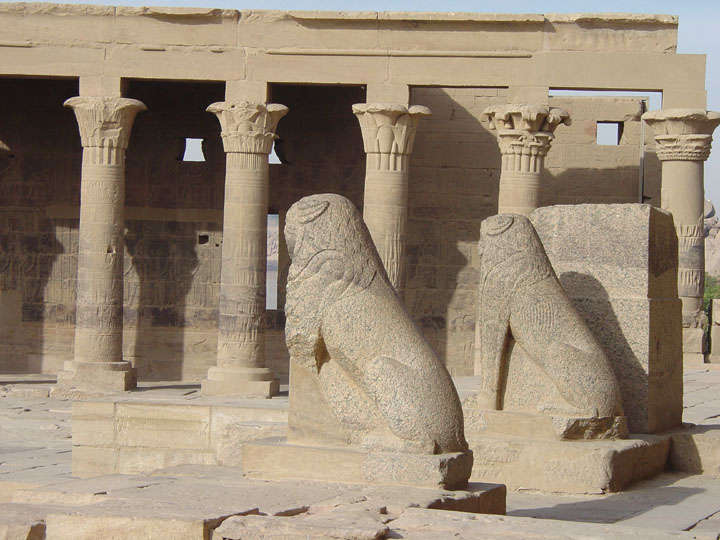
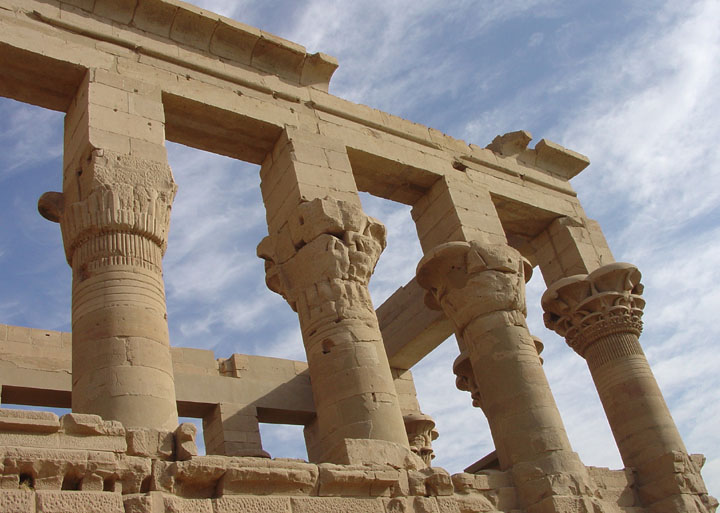
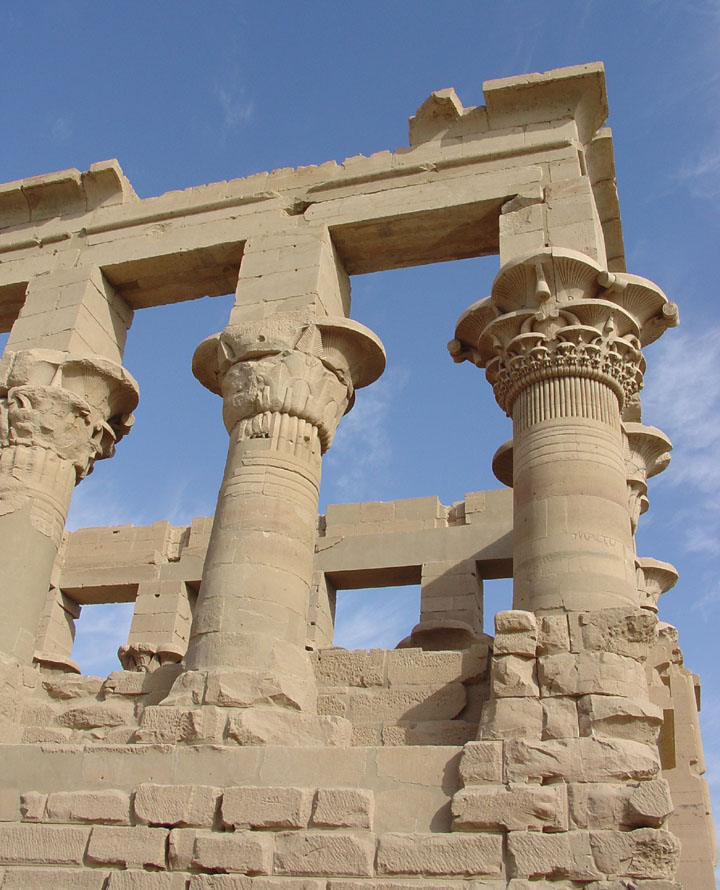

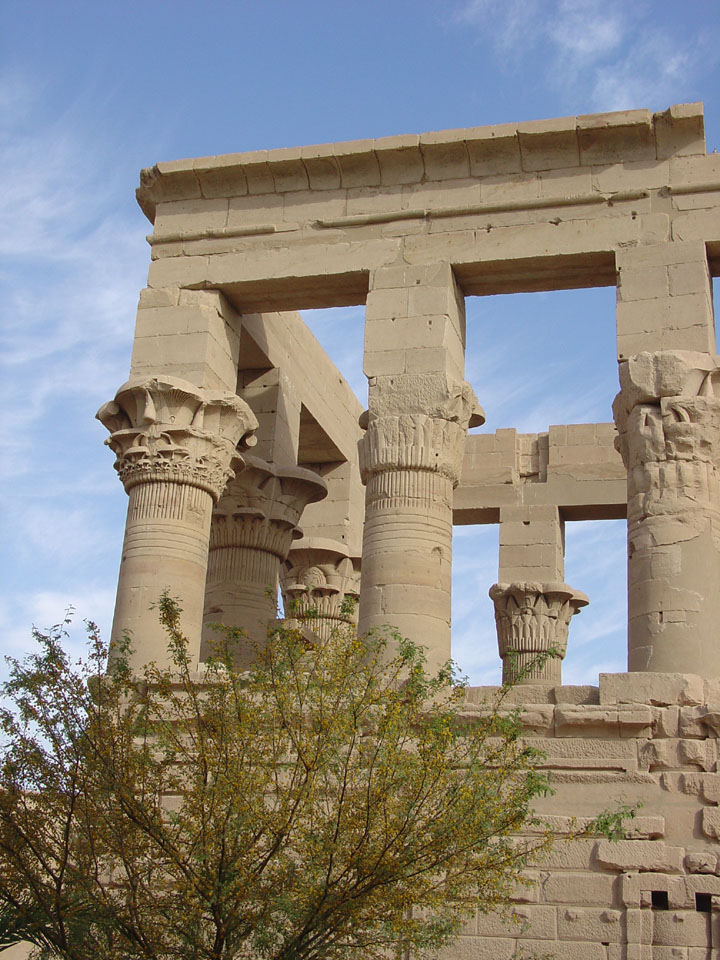
On the right side of the temple precinct stands Trajan’s kiosk. This beautiful
building was where the sacred barge with the statue of Isis landed during it’s
annual precession down the river. The kiosk, rebuilt by the Roman emperor
Trajan, consists of 14 columns with screen walls which are decorated with scenes
of Trajan making offerings to Isis, Osiris and Horus.
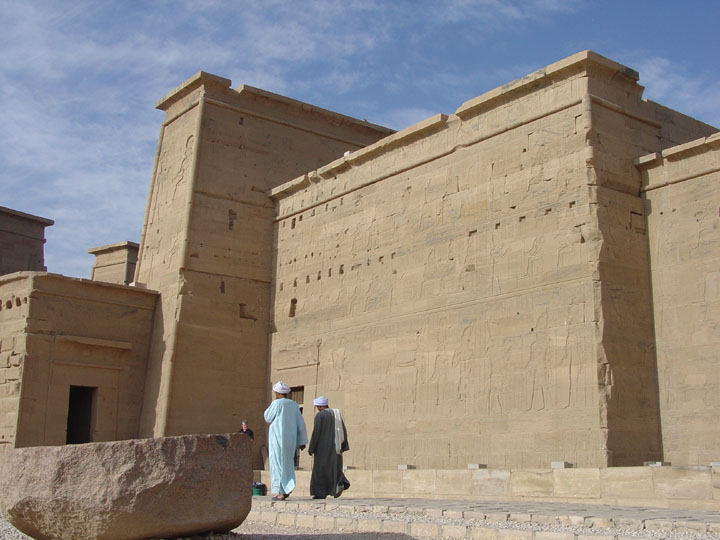
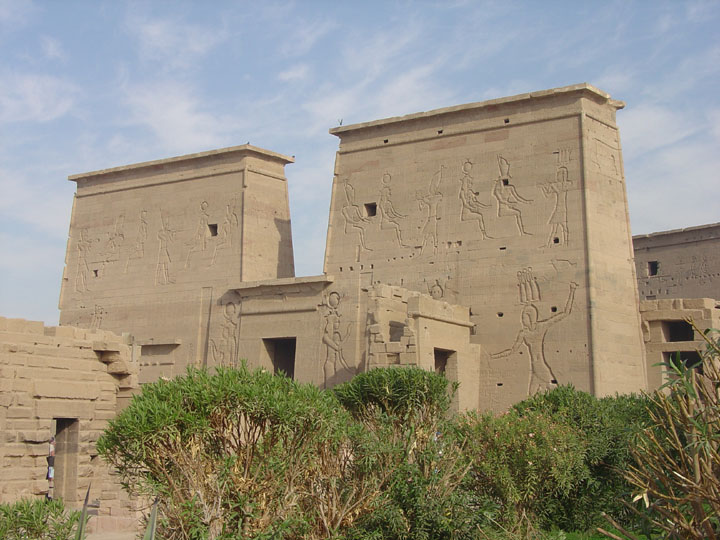
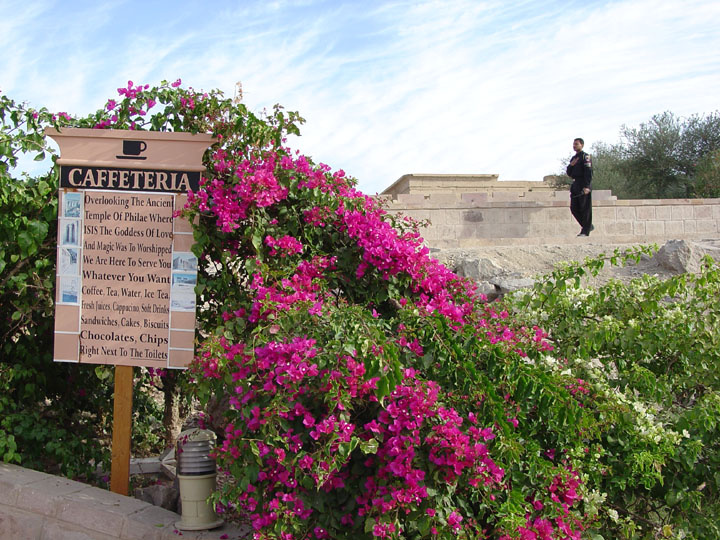
can have tea before returning to the boat